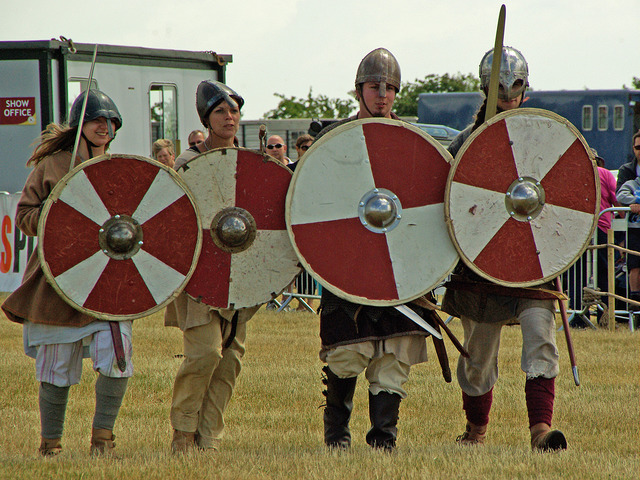
The Vikings and Their Enemies – Warfare in Northern Europe, 750 -1100 by Philip Line has lots of discussion on warfare in the Viking Age. Warfare itself is off-point from the focus of this blog. The main emphasis here highlights the economic factors of ancient times. I will, however, highlight a few of the ideas in the book of interest to me.
Limits to our knowledge of the Viking Age
The author explains throughout the text the dramatic limits of our knowledge of the Viking age. Much of what we know comes from written records created one or three centuries after the incidents under discussion. In additions, those discussions are frequently filtered by a Christian worldview with some additional agenda on the part of the author.
Even archaeology provides partial evidence.
Author points out that only the things that survived centuries of possible decomposition can be discovered, and only what was discovered can be analyzed. Even the survived/discovered/analyzed material must be assessed through a time and cultural filter the archaeologist must work with.
This lack of knowledge carries over to the typical size of ships, which translates into creating a challenge to estimate the size of invading armies (page 100). An estimate of 30 men per ship is based on exactly two, count ‘em 2, ship finds. Author says law-codes hint at typical sizes of 20 or 25 oars but that may only be a framework for levying taxes.
The size of armies in the field need to be interpreted with care since there is minimal corroborating evidence.
Again pointing out the difficulties of interpreting the Viking era is the author’s discussion of the pagan deities. In the more modern era with written culture, we humans tend to define what areas each deity is responsible for. In the Viking age, the areas of responsibility for each of the deities, such as Thor or Oden, would be much fuzzier with overlapping areas of responsibilities. One god might be in charge of war in one location while another god has that duty in another location. This produces confusion to us today because we have a well-organized view of cosmology, whether we are Christian or Muslim. This is a place where imposing our worldviews on ancient religion causes us more problems in interpreting ancient times.
Next post: battle techniques